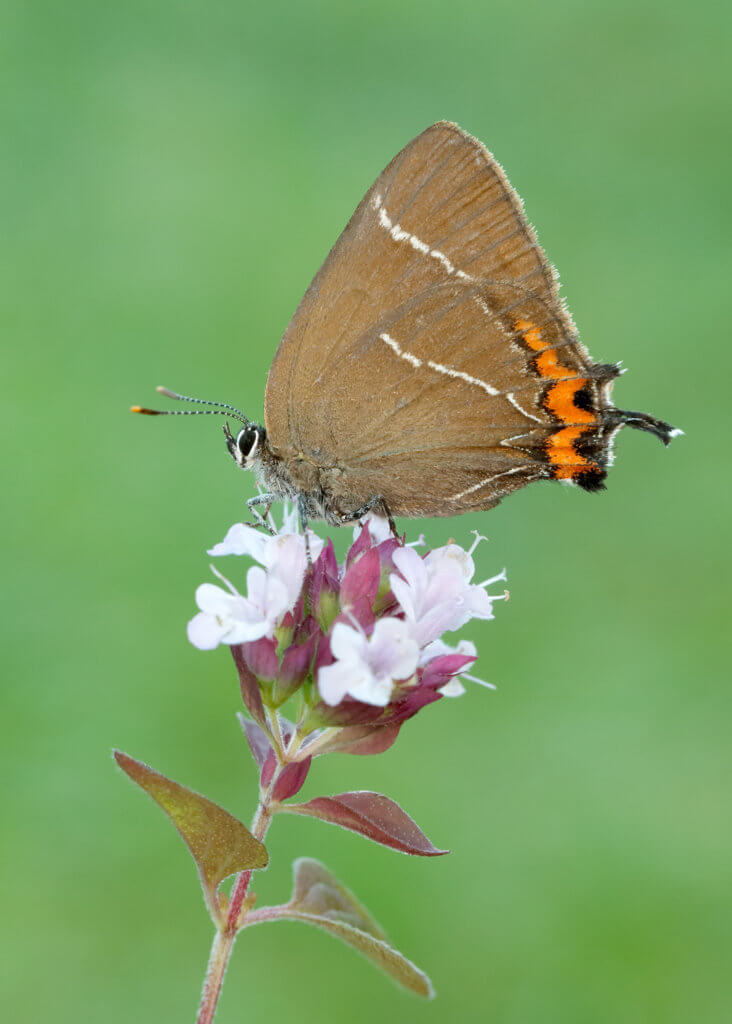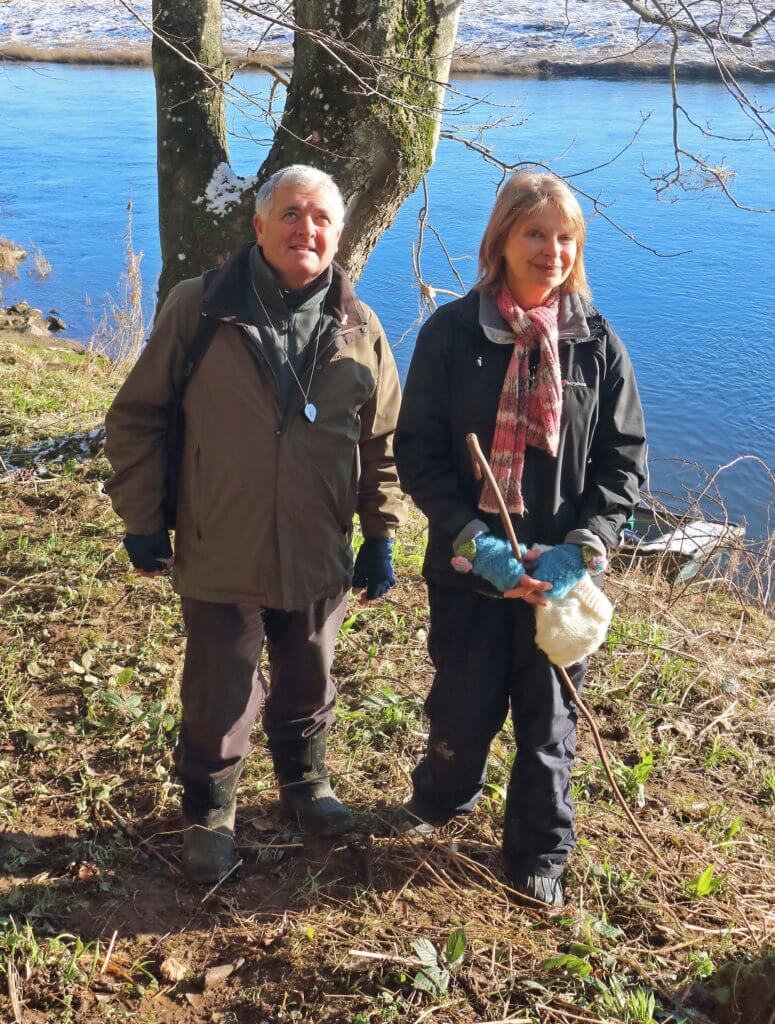
A declining butterfly may have started breeding in Scotland for the first time in 130 years, after eggs were discovered by amateur naturalists, Butterfly Conservation (BC) has confirmed.
A handful of White-letter Hairstreak eggs were found on Wych Elm trees at Lennel near Coldstream, Berwickshire, on Sunday 4 February.
The discovery comes after Borders Butterfly Recorder Iain Cowe spotted an adult White-letter Hairstreak about 10 miles north east of this area last year – the first sighting in Scotland since 1884.
Iain said ‘The discovery of these eggs is hugely significant as it not only confirms the White-letter Hairstreak is breeding here, but one of the eggs was an old, hatched shell – so it looks like the butterfly could have been breeding here since at least 2016.
Last year was an impossible find, but this year’s egg discovery is beyond anything we thought possible.‘.
The White-letter Hairstreak, which has a distinctive ‘W’ marking on the underside of its wing, is widespread across England and Wales, but the butterfly has suffered a 72% decline over the last decade.
The butterfly’s caterpillars feed on elm and the White-letter Hairstreak declined dramatically in the 1970s as a result of Dutch Elm disease.
For more than ten years, a group of BC volunteers have been monitoring the butterfly and its gradual spread northwards, which experts think is most likely the result of a warming climate.
Two of these dedicated volunteers, 70-year-old Ken Haydock and 69-year-old Jill Mills, found the White-letter Hairstreak eggs after being asked to check the elm trees at Paxton following last year’s butterfly sighting.
Ken, who is from Bolton, Greater Manchester, said ‘It was a lovely sunny morning and we were searching the elm trees by the River Tweed at Lennel when Jill called me over. I could see by the look on her face that she had found something. We were both beaming with disbelief and delight when we realised what Jill had found and within seconds I was fumbling in my pack for the camera – my hands were shaking!‘.

Before the discovery at Lennel, the most northern location for White-letter Hairstreak eggs was at Rothbury in Northumberland, about an hour south of Paxton.
Director of Butterfly Conservation Scotland, Paul Kirkland, said ‘We will need to have a few more years of confirmed sightings before we can officially class this butterfly as a resident species in Scotland. If this happens, it would take the total number of butterflies found in Scotland to 34, which really would be something to celebrate.‘.
Anyone wishing to help Butterfly Conservation Scotland monitor species like the White-letter Hairstreak should visit www.butterfly-conservation.org/scotland to see how to get involved.

Ah..the joy of two people finding a rare butterfly’s eggs…just wonderful! Put a smile on my face!
The first North Cumbria record was a single butterfly photographed by some one visiting the Bee-eaters in 2015 near Brampton. Since then butterflies have been found in many locations and may well have spilled into Scotland via D & G only 12 miles away. Interesting to note that large mature Elms never died out in D & G but Elm disease is now effecting the area.